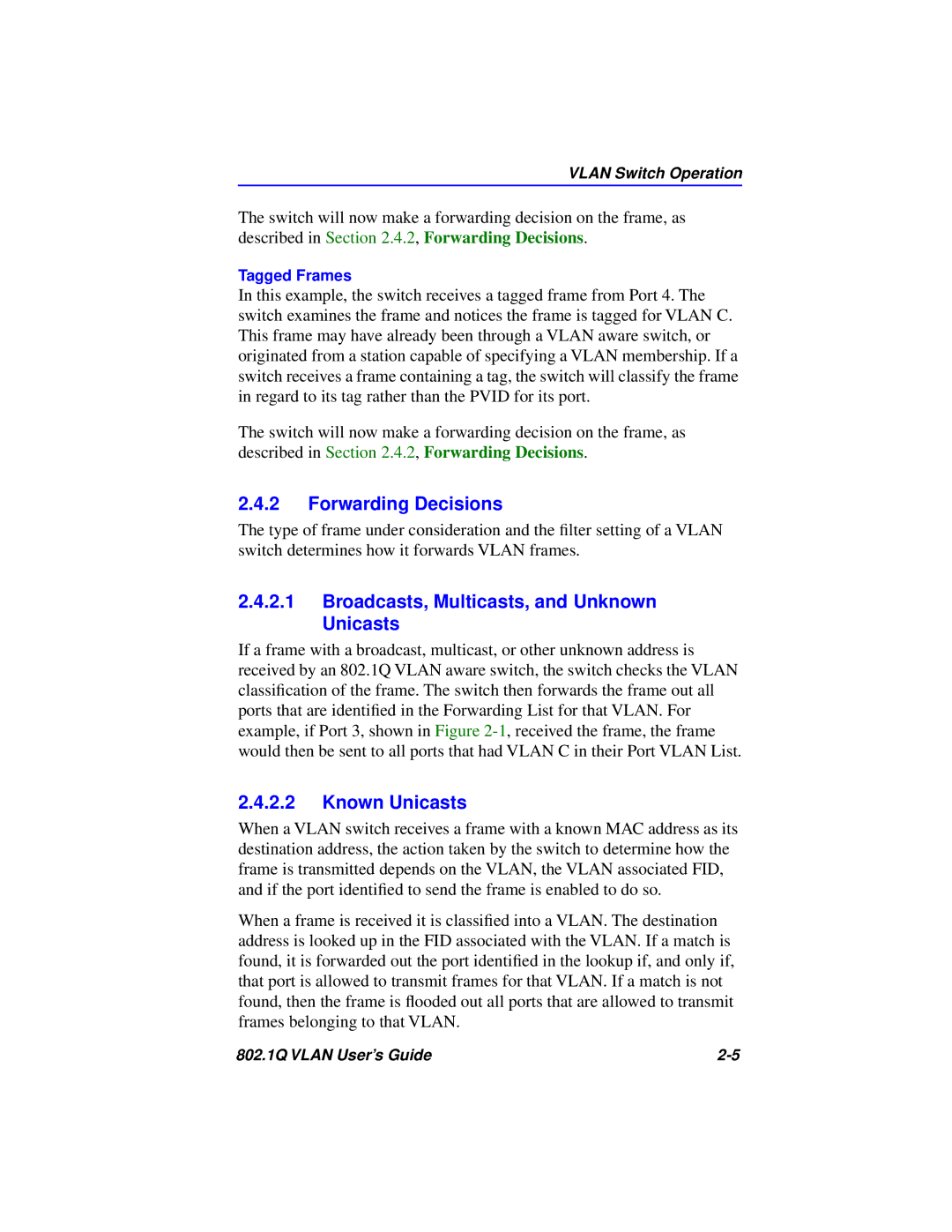VLAN Switch Operation
The switch will now make a forwarding decision on the frame, as described in Section 2.4.2, Forwarding Decisions.
Tagged Frames
In this example, the switch receives a tagged frame from Port 4. The switch examines the frame and notices the frame is tagged for VLAN C. This frame may have already been through a VLAN aware switch, or originated from a station capable of specifying a VLAN membership. If a switch receives a frame containing a tag, the switch will classify the frame in regard to its tag rather than the PVID for its port.
The switch will now make a forwarding decision on the frame, as described in Section 2.4.2, Forwarding Decisions.
2.4.2Forwarding Decisions
The type of frame under consideration and the filter setting of a VLAN switch determines how it forwards VLAN frames.
2.4.2.1Broadcasts, Multicasts, and Unknown Unicasts
If a frame with a broadcast, multicast, or other unknown address is received by an 802.1Q VLAN aware switch, the switch checks the VLAN classification of the frame. The switch then forwards the frame out all ports that are identified in the Forwarding List for that VLAN. For example, if Port 3, shown in Figure
2.4.2.2Known Unicasts
When a VLAN switch receives a frame with a known MAC address as its destination address, the action taken by the switch to determine how the frame is transmitted depends on the VLAN, the VLAN associated FID, and if the port identified to send the frame is enabled to do so.
When a frame is received it is classified into a VLAN. The destination address is looked up in the FID associated with the VLAN. If a match is found, it is forwarded out the port identified in the lookup if, and only if, that port is allowed to transmit frames for that VLAN. If a match is not found, then the frame is flooded out all ports that are allowed to transmit frames belonging to that VLAN.
802.1Q VLAN User’s Guide |
